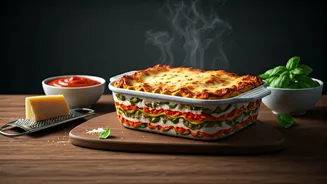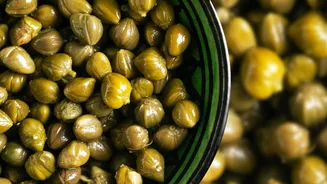Assembly Guidance
Building a vegetarian lasagna requires a few key steps to ensure a delicious outcome. Begin with a flavorful sauce; this forms the foundation of the dish.
Next, consider the layering process. The order of the ingredients matters. Typically, you will start with a layer of sauce, then noodles, followed by your chosen vegetarian filling (such as vegetables and ricotta cheese), and then cheese. Repeat these layers until you fill the dish. Ensure that the top layer is covered with sauce and cheese for optimal taste. The assembly itself, though seemingly simple, requires a bit of attention to detail to achieve the best results. The goal is to create a lasagna that is evenly cooked and provides a delightful combination of flavors and textures in every bite. Proper layering will also ensure the lasagna holds its shape when cut and served. Don't rush; take your time assembling the dish for a truly satisfying meal. Consider adding seasonings like herbs for an enhanced flavor profile. Assembling this dish correctly guarantees that each layer melts and blends perfectly. Moreover, be sure that all components are well distributed to create a balanced bite.
Sauce: Crucial Element
The sauce is the soul of any great lasagna. For a vegetarian lasagna, consider a rich tomato-based sauce, such as marinara or a homemade sauce. The richness and flavor of the sauce can considerably enhance the overall experience. The sauce should be generous, as it moistens the noodles and helps to meld all the flavors together. Think of it as the binder that integrates all the different elements. The quality of the sauce will directly impact the taste of the final dish. Adding various herbs, like basil, oregano, and thyme, elevates the flavor profile, creating a fragrant and complex sauce. You can also incorporate vegetables like onions, garlic, and carrots into the sauce for extra flavor and texture. Ensure the sauce isn't too thick or too thin; a good consistency will coat the noodles and cling to the other ingredients. Take the time to simmer the sauce; this process intensifies the flavors. Whether using a store-bought sauce or a homemade version, ensure it is flavorful and complements the vegetarian ingredients used in the lasagna.
Related Recipes & Tips
Exploring related recipes and cooking tips can greatly enhance your vegetarian lasagna experience. Consider exploring different types of vegetarian fillings to vary your lasagna. Think of incorporating spinach, mushrooms, or roasted vegetables. Each of these fillings contributes different flavors and textures, expanding the range of flavors you can include in the dish. For instance, a spinach and ricotta filling would provide a creamy, balanced taste. Similarly, a mushroom-based filling adds a savory, earthy dimension. Furthermore, consider experimenting with different types of cheese, such as mozzarella, provolone, or a combination. The type of cheese impacts the overall flavor and texture. Also, look into cooking tips for the noodles. Consider pre-cooking the noodles to prevent them from becoming too dry. Learning about various cooking methods, such as baking, can also improve your technique. Consider making lasagna ahead of time. Assemble the lasagna and store it in the refrigerator for a day before baking. This gives the flavors time to meld. Using these tips and experimenting with different ingredients can help you create a truly memorable vegetarian lasagna experience.












